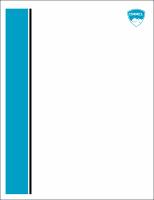Please use this identifier to cite or link to this item:
https://hdl.handle.net/11681/12144| Title: | Evaluation of clean solid phases for extraction of nitroaromatics and nitramines from water |
| Authors: | Environmental Laboratory (U.S.) U.S. Army Environmental Center Jenkins, Thomas F. Thorne, Philip G. Myers, Karen F. McCormick, Erika F. Parker, Don E. Escalon, B. Lynn |
| Keywords: | Analysis RDX TNT Explosives Salting out Water Preconcentration Solid-phase extraction Groundwater Pollution Nitroamines Nitroaromatic compounds |
| Publisher: | Cold Regions Research and Engineering Laboratory (U.S.) Engineer Research and Development Center (U.S.) |
| Series/Report no.: | Special report (Cold Regions Research and Engineering Laboratory (U.S.)) ; 95-22. |
| Description: | Special Report Abstract: Salting-out solvent extraction (SOE) was compared with cartridge and membrane solid-phase extraction (SPE) for preconcentration of nitroaromatics, nitramines, and aminonitroaromatics prior to determination by reversed-phase high-performance liquid chromatography. The solid phases used were manufacturer-cleaned materials: Porapak RDX for the cartridge method and Empore SDB-RPS for the membrane method. Thirty-three groundwater samples from the Naval Surface Warfare Center, Crane, Indiana, were analyzed using the direct analysis protocol specified in SW846 Method 8330, and the results were compared with analyses conducted after preconcentration using SOE with acetonitrile, cartridge-based SPE, and membrane-based SPE. For high-concentration samples, analytical results from the three preconcentration techniques were compared with results from the direct analysis protocol; good recovery of all target analytes was achieved by all three preconcentration methods. For low-concentration samples, results from the two SPE methods were correlated with results from the SOE method; very similar data was obtained by the SOE and SPE methods, even at concentrations well below 1 μg/L. The large chromatographic interferences observed for the SPE methods in an earlier study using less clean materials were largely absent here. A small interference was observed for both SPE methods at the retention time of RDX on the primary analysis column that translated to concentrations ranging from 0.2 to 0.6 μg/L RDX. Detection limits for RDX should be raised to 0.6 μg/L if the SPE methods are used for preconcentration due to this potential interference. We recommend that solid-phase extraction be included as an option in SW846 Method 8330 as well as SOE. |
| Rights: | Approved for public release; distribution is unlimited. |
| URI: | http://hdl.handle.net/11681/12144 |
| Appears in Collections: | Special Report |
Files in This Item:
| File | Description | Size | Format | |
|---|---|---|---|---|
| SR-95-22.pdf | 132.12 kB | Adobe PDF |  View/Open |